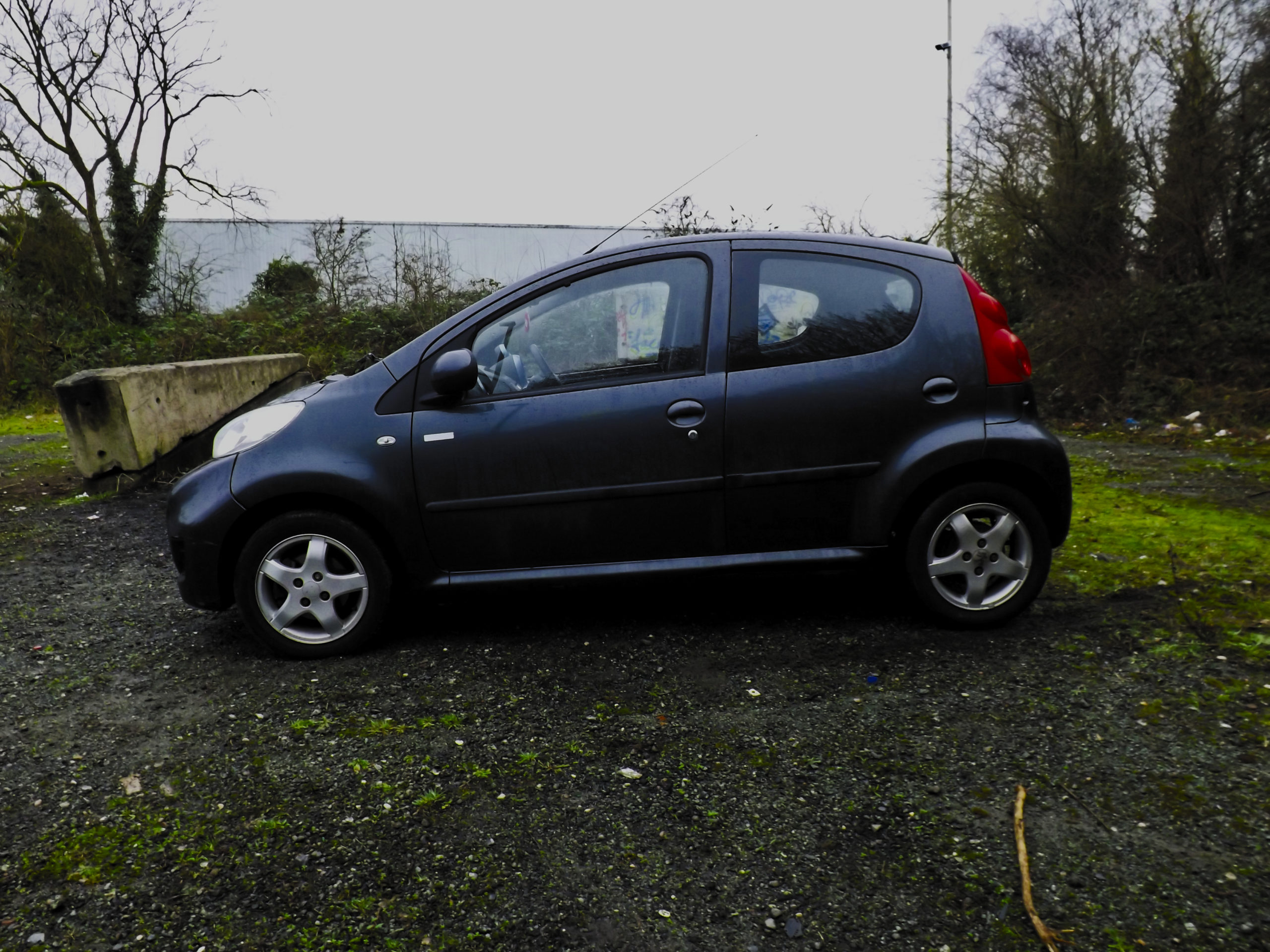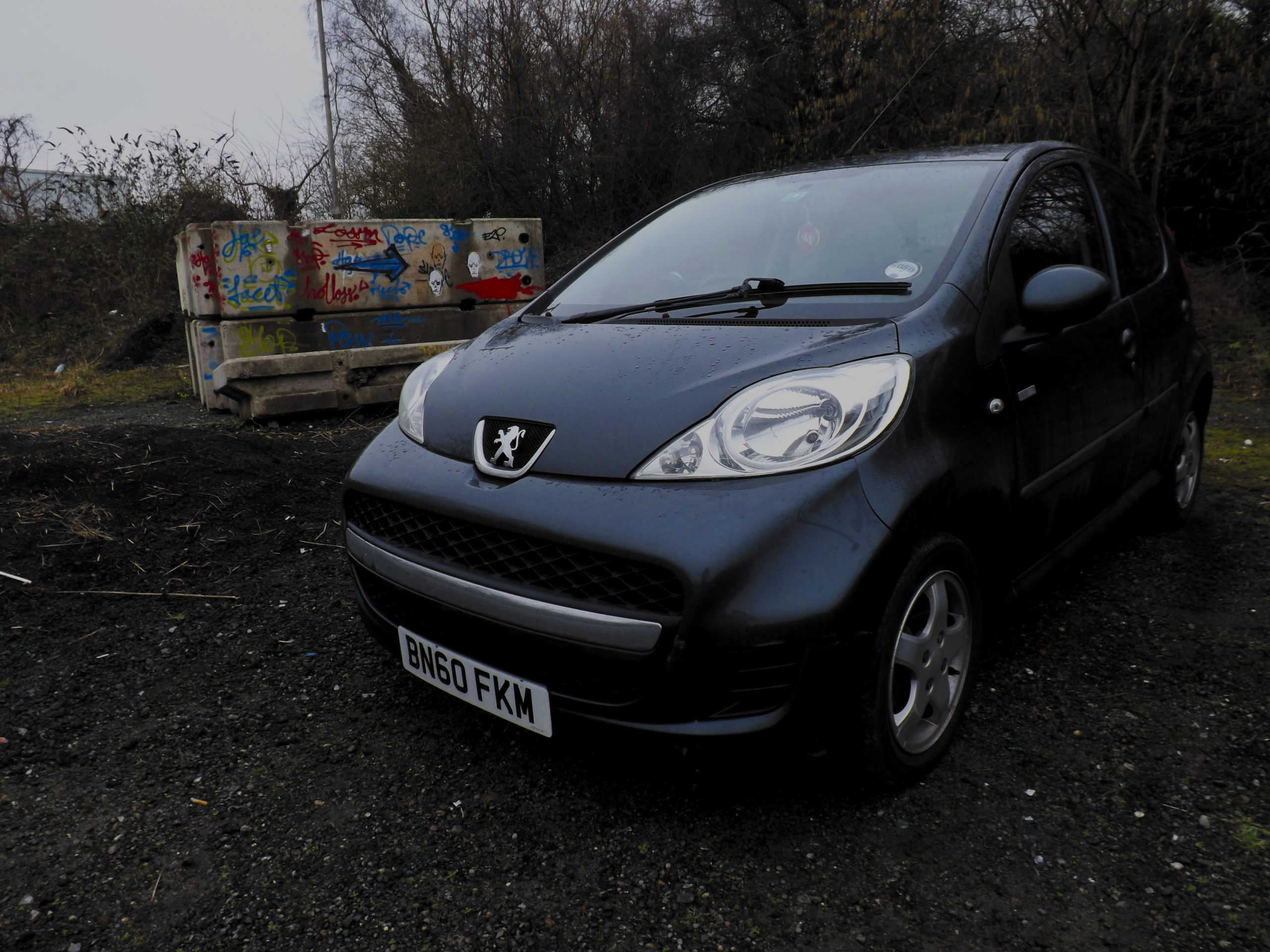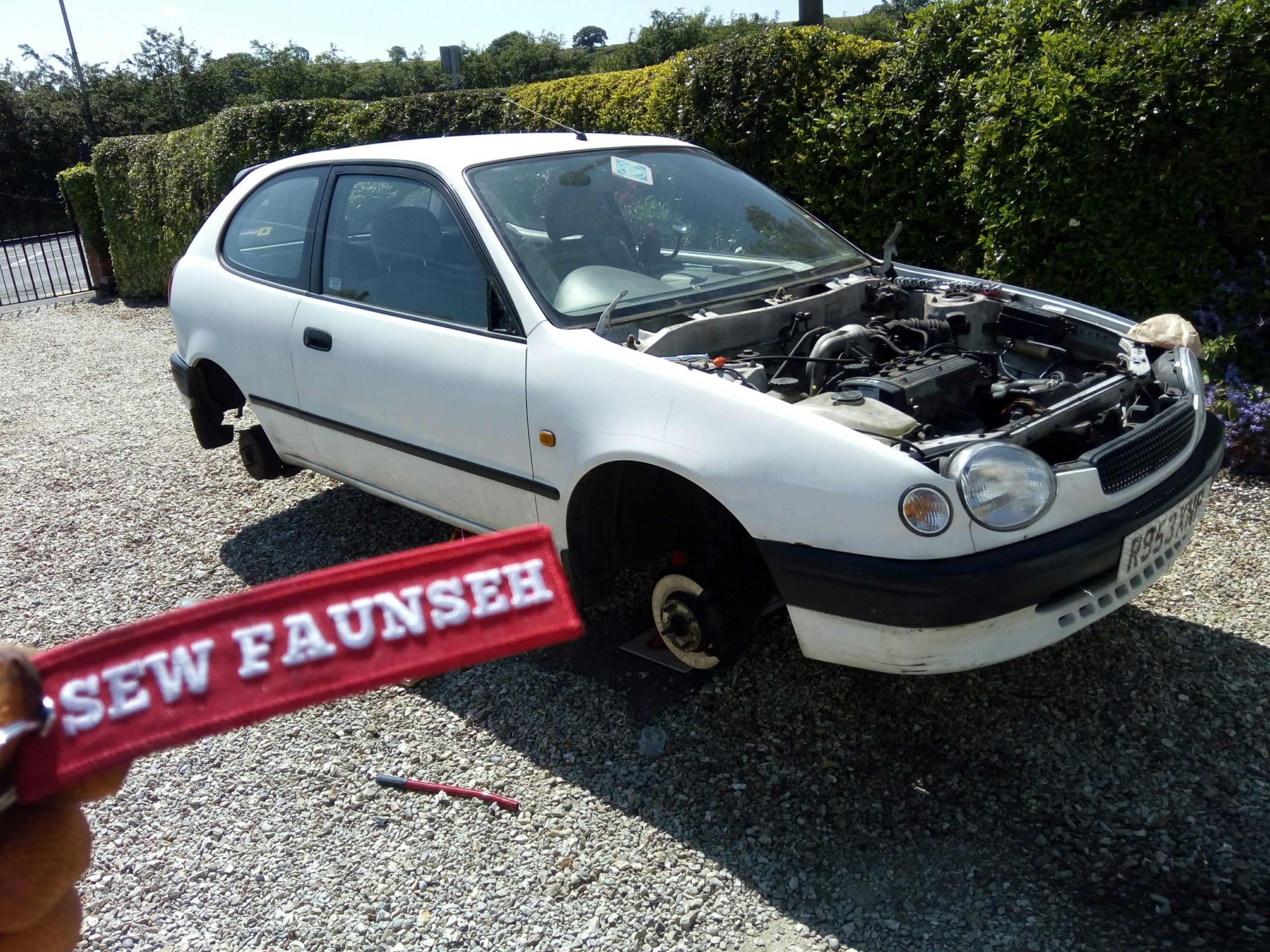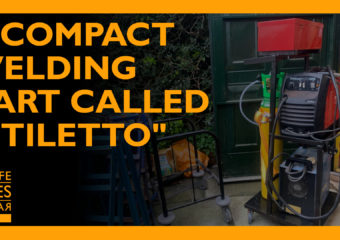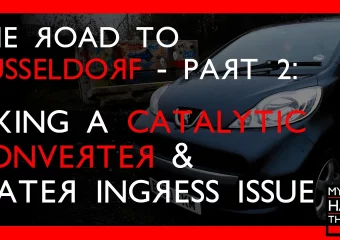I’ve been the proud owner of a Peugeot 107 for the last 10 years. I bought it brand new when it had only 15 miles on the clock and I’ve added over 85,000 to it in that time. I’ve taken it as far west as Oban, Scotland, and as far east as Budapest. In those 10 years I’ve learnt everything there is to know about my Peugeot 107 and the cars in general.
In various places on the internet, the question is always asked about what good small car should be bought? Even when someone decides on buying a Peugeot 107, they ask about what should they look out for? What are the common problems or faults with the Peugeot 107? And, after all that, is the Peugeot 107 a good, reliable car?
The Peugeot 107 is the best small car money can buy
The Peugeot 107, and it’s contemporaries the Citroen C1 and Toyota Aygo, are the best small cars you can buy today. Either brand new (with the Peugeot 108) or second hand, they offer incredible value for money in the areas where it matters. Cheap running costs, low repair bills, and low cost of maintenance. I’ve fought the car’s corner many times, even in an article about why I think the Peugeot 107 is the spiritual successor to the Mini. The car is also an unassuming sports car with it’s own racing series – the BRSCC CityCar Cup!
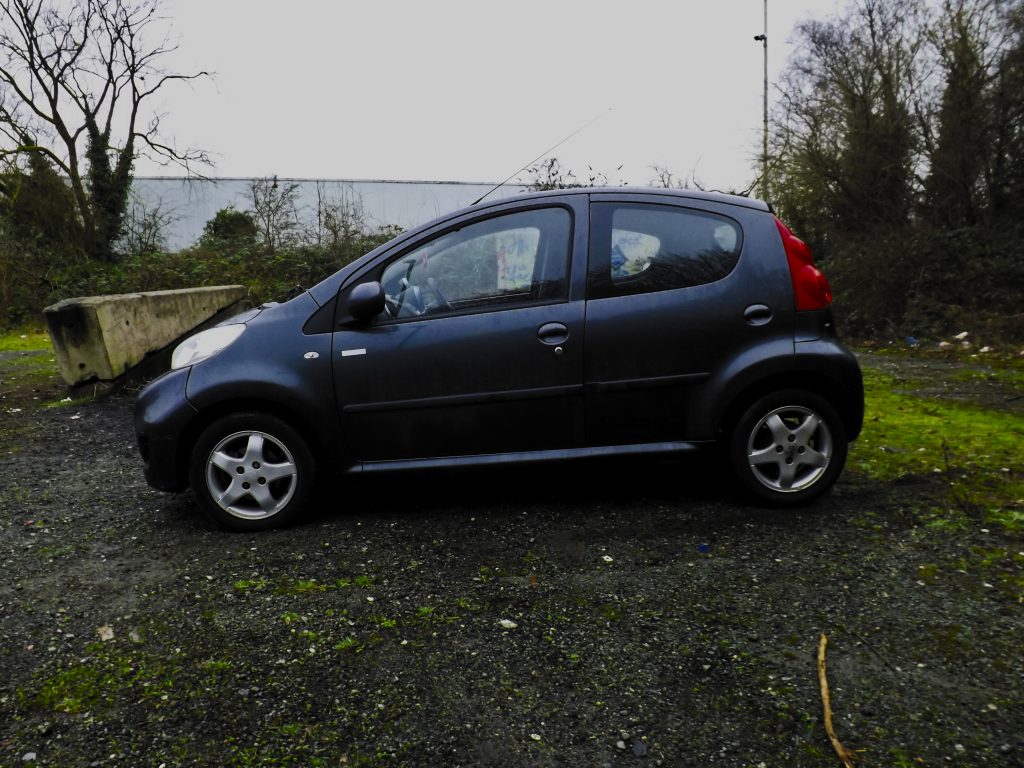
I might be biased, given the length of time I’ve owned the car, but that doesn’t mean I suffer fools gladly either. I’ve owned other cars in the last 10 years, and it’s really only my Peugeot 107 that’s been kept. You don’t keep a bad or unreliable car for 10 years! So from these 10 years of ownership, I can tell you what to look out for when purchasing a Peugeot 107, Citroen C1 or Toyota Aygo, and what their common faults are.
But, most importantly, I’ll tell you how easy these issues are to fix. So while they might put you off, the remedy will mean that you can be confident in purchasing a car that will not let you down!
Water getting inside the car
Water can get in to the cockpit of the car in a number of areas. Thankfully all of these can be fixed relatively easily and cheaply. So there is no need to worry about it.
The most common areas for water to enter the Peugeot 107 is through the high level brake light at the rear. The brake light screws on to the car, and a foam gasket sits between the car and the brake light. Over time, the foam gasket can harden and break, resulting in water getting in to the car. This water then sits in the spare wheel well.
This can be fixed easily by replacing the foam gasket for another one. Silicone sealant only offers a short term fix for this issue, and is messy to remove. Trust me, I used silicone sealant and it didn’t work!
Another area for water to enter the car is from behind the two main brake light clusters. Again, this is the result of the foam gasket failing over time. You can replace this with a heavy duty draught excluder, applying it to both the head light cluster and body of the car. I’ve done this and it’s been very successful.
Finally, the last area of water ingress is down to the doors. Again, over time, the door seals can harden and weaken. However, I’ve noticed that water from a pressure washer could get in to the door gaps even after 6 months of ownership. You can replace the door seals, but it’s better to add another rubber door seal to the door frame. I’ve done this to my Peugeot 107 (as you can see below) and it’s resolved all of the water ingress issues I’ve been experiencing.
Cracking Catalytic Convertor
My Peugeot 107 is currently on it’s 3rd catalytic convertor, as they kept cracking on me. The catalytic convertor serves as a “manicat”. The manifold forms part of the catalytic convertor, and due to the heat of the manifold the weld that holds the catalytic convertor to the manifold cracks over time until it breaks completely off. You’ll know if this happens to you as your lovely Toyota sourced engine ends up sounding like a tractor!
The catalytic convertor should have a little bracket on the side of it, as pictured below, which should be bolted on to the engine block. My car never had this bracket and it was never attached, so after normal use, the vibrations and heat caused the crack.
To fix this, purchase a second hand catalytic convertor from eBay that contains the bracket, and fit it (or get a mechanic) with the bracket attached to the engine block. A 10mm bolt secures the catalytic convertor’s bracket to the engine block. You can also have a mechanic weld the broken catalytic convertor back together. As long as the bracket is present and attached to the engine block, you won’t have the problem again.
Never use a 3rd party catalytic convertor
When the cracked catalytic convertor problem happened to me, I opted to buy a brand new one from Euro Car Parts. This cost, at the time, £120. A brand new one from Peugeot costs nearly £1,000! So this, to me, seemed an obvious thing to do.
The problem is, while the 3rd party catalytic convertor didn’t break, it robbed the engine of power. When you only have 66bhp to begin with, a strangled engine is noticeable. It ruins the drive of the car, robs you of power, and can affect fuel economy.
A second hand OEM catalytic convertor costs half of what a 3rd party catalytic convertor from Euro Car Parts charge. So it makes no sense to buy a new 3rd party one when a second hand OEM one offers so much more value for money.
Rotten exhaust
The Peugeot 107 has a very economical engine, and like all modern engines it takes a while to warm up. Because of the size of the car, it’s more than likely it’ll have been used for short journeys. My wife often used it to commute to the train station, which is about 10 minutes. By the time she would arrive at the train station, the car wouldn’t have warmed up to temperature.
Short journeys really do put a strain on a car, and this can manifest itself in many ways. For the Peugeot 107, it manifested itself by rotting the exhaust back box. Condensation builds up in the back box, and that means water can sit in the back box without being burned off. Water and unprotected mild steel don’t mix, and corrosion will set in. This then, eventually, gives the car a rattle. If kicking or hitting the back box makes it rattle, then the back box is as good as scrap and needs to be replaced.
Obviously, avoiding short journeys will prevent something like this from happening. But that can’t always be helped. Instead, drilling a tiny pin hole in to the bottom of the back box can help drain the back box of any condensation build up without affecting emisions.
Rusty underneath
Given the cheap price point of the Peugeot 107, Citroen C1 and Toyota Aygo, there were some savings made when it came to rust proofing the chassis. The chassis is primed, and only the basic rust proofing has been done to these cars. Over time, stones get thrown up and hit the underside, scratching the paint that’s there opening up the metal to the weather. In the UK, we put salt on our roads (but no vinegar, which is a shame) so this can speed up the corrosion process.
You should expect to see some spots of rust under your car, especially if it’s 10 years old like mine is! But a quick rub of the wire brush with your drill, some rust convertor and paint will soon rectify any rust spots. I haven’t come across one of these cars that resemble swiss cheese, so I wouldn’t expect to see huge holes in the body.
For added peace of mind and protection, you should consider applying a rust proving chemical like Waxoyl to under your car. You can use a bitumen based underseal, but this can trap moisture in hidden areas and cause more problems than it solves. Waxoyl, while it is oil based, can be removed if needed. It can also be applied clear, so you can keep an eye on the body for any developing areas of rust.
The Peugeot 107 is a great, reliable, cheap car
In the 10 years I’ve owned my Peugeot 107, it has never let me down. It had one flat battery which was replaced for £40, and that’s it. Servicing is cheap, insurance is also reasonable, and the parts for when things do go wrong are dirt cheap. There really isn’t a better car than the Peugeot 107, and I hope that the above has helped you nab a great one. A bit like the Capri in the late 1980’s/early 1990’s, everyone should own a Peugeot 107, Citroen C1 or Toyota Aygo at least once in their life. Be that person, and get yourself a good one!

